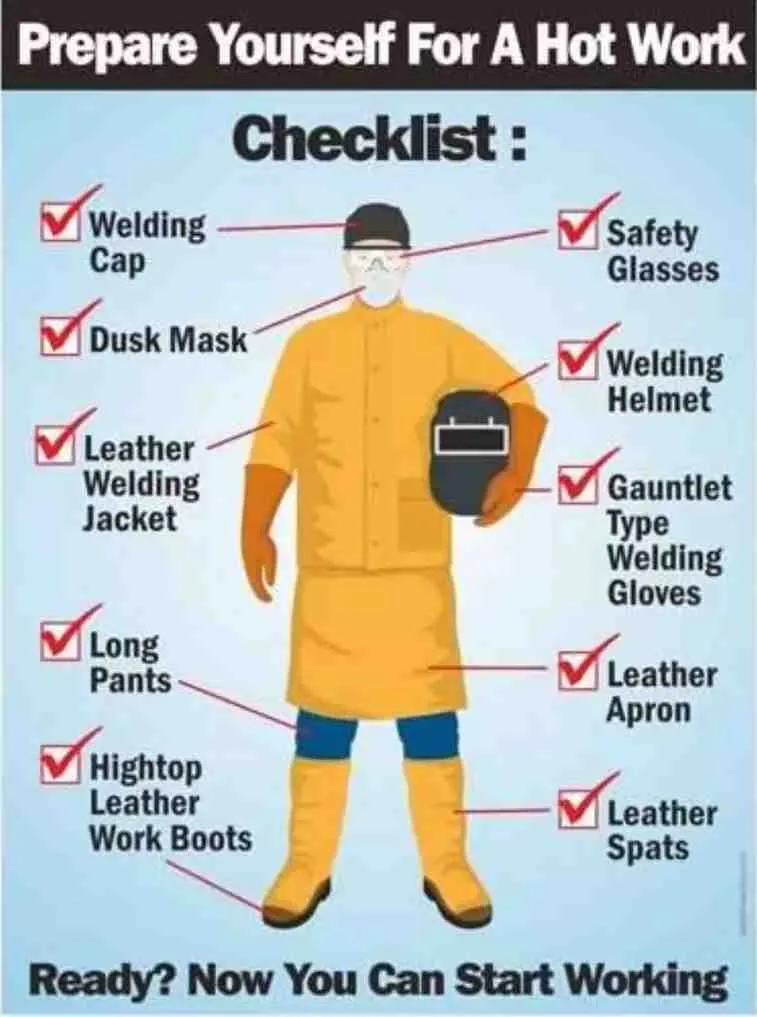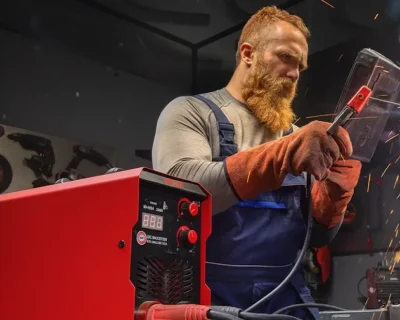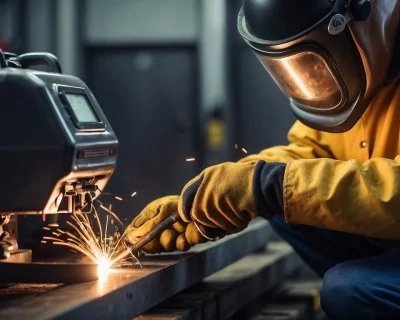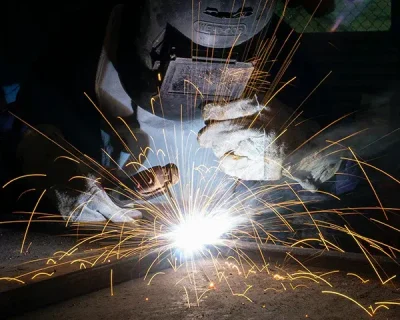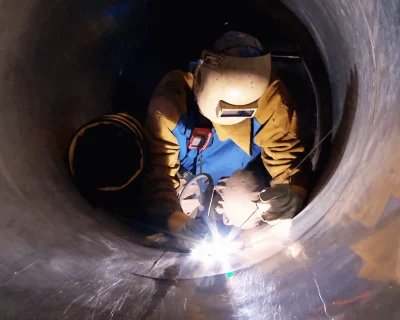Blog

Welding Safety: PPE – Your Last Line of Defense Against Burns and Blindness (WeldSafe Essentials 4)
Personal Protective Equipment (PPE) isn’t optional gear—it’s the non-negotiable armor that stands between you and soldadura’s triple threat: flying molten spatter, intense arc light, and invisible UV/IR radiation. In WeldSafe Essentials #4, we’ll walk you through selecting, using, and maintaining welding-specific PPE to prevent scalding burns, arc-eye (welder’s flash), and long-term vision damage. Skip the right gear, and a single spark can ruin your day—or your eyesight.
The Hazards PPE Must Stop
- Molten Spatter & Sparks
- Travel up to 35 ft, burn at 2,500°F+
- Can ignite clothing or embed in skin
- Arc Light & Radiation
- UV-B causes “welder’s flash” (corneal sunburn) within seconds
- IR leads to retinal burns over time
- Visible light intensity = staring into the sun
- Fumes & Particulates
- Hexavalent chromium, manganese, ozone—carcinogenic and neurotoxic
Fact: NIOSH reports over 1,000 arc-eye cases annually in the U.S. alone—nearly all preventable with proper shade lenses.
Essential Welding PPE Breakdown
| Body Area | Required Gear | Key Features |
|---|---|---|
| Eyes/Face | Auto-darkening welding helmet (ADF) | – Shade 9–13 (match process/amperage) – Reaction time ≤ 1/10,000 sec – Sensors: 4 minimum |
| Neck/Head | Leather cape or bib + flame-resistant (FR) beanie | – 360° coverage – Blocks side-entry spatter |
| Torso | FR welding jacket (leather or treated cotton) | – No synthetic fabrics (melt risk) – Snap closures (no zippers) |
| Hands | MIG/TIG gloves (goat/deer skin) or Stick gloves (heavier cowhide) | – Insulated palms, reinforced thumbs |
| Feet | High-top leather boots with metatarsal guards | – EH-rated soles, no steel toe caps (conductive) |
| Lungs | Respirator (PAPR for hex-chrome jobs) | – N95 minimum; P100 for heavy metals |
Shade Lens Guide (ANSI Z87.1)
| Process | Amps | Minimum Shade |
|---|---|---|
| Stick | 50–150 | 10 |
| MIG (steel) | 100–250 | 11–12 |
| TIG | 50–200 | 10–12 |
| Plasma | Any | 8–13 |
Never stare at the arc without protection—even for “just a second.”
Proper Use & Fit Tips
- Helmet Fit
- Adjust headgear so lens sits 2–3 inches from eyes
- Replace cracked lenses immediately—micro-fractures leak UV
- Layering
- FR long-sleeve shirt under jacket
- Tuck pant legs into boots to block spatter
- Glove Selection
- TIG: Thin, dexterous, no bulk
- MIG/Stick: Thick, padded, spatter-resistant
- Respirator Seal
- Perform user seal check (positive/negative pressure) every donning
- Shave facial hair if needed—beards break seals
Maintenance & Inspection Checklist
- Daily: Wipe helmet lens, check auto-darkening battery (low-battery indicator?)
- Weekly: Inspect jacket seams, glove stitching, boot laces
- Monthly: Replace respirator filters per exposure hours
- Immediately: Discard any PPE with holes, burns, or cracked lenses
Pro Hack: Use clear grinding visors under your ADF—flip up for prep, flip down for soldadura. Saves lens wear.
Real-World PPE Failures
| Failure | Consequence | Fix |
|---|---|---|
| Worn-out shade 8 lens on 200A MIG | Arc-eye, 2 days off work | Upgrade to shade 11 ADF |
| Cotton hoodie under jacket | Melted fibers, 2nd-degree neck burn | Switch to FR cotton or leather |
| Loose glove cuff | Spatter down wrist, blistering | Velcro cuffs or gauntlet style |
Legal & Liability Note
OSHA 1910.132 mandates employer-provided PPE and training on proper use. Failure to comply = $15,625+ fines per violation. Document fit-testing and training—insurance auditors love it.
Quick PPE Donning Sequence
- FR shirt + pants
- Boots (tuck pants)
- Gloves
- Respirator (seal check)
- Jacket/cape
- Helmet (test ADF in sunlight)
Gear Up or Get Burned
Welding PPE isn’t about looking tough—it’s about going home with your skin and sight intact. Invest in quality, inspect religiously, and never compromise on shade. One skipped helmet = a lifetime of regret.
Drop your favorite PPE brand or horror story below. Let’s keep the conversation (and the safety) going.
Check our previous blog on the topic of Welding Safety: Preventing Electrocution – Your Life Depends on It (WeldSafe Essentials 3) – ZMDE Steel Machinery


